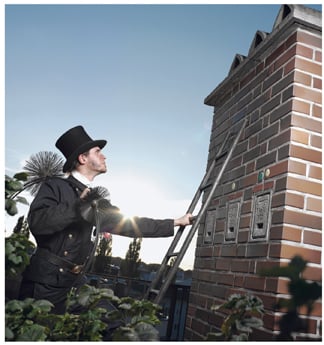 A fire breaks out and destroys a single-family home. An investigation reveals that a chimney sweep cleaned the fireplace system 10 months prior. As a claims adjuster, what issues and areas are important to assess? Let's first look at fireplace systems, and then the duties of a chimney sweep and what areas adjusters should review when it comes to evaluating the potential for subrogation recovery.
A fire breaks out and destroys a single-family home. An investigation reveals that a chimney sweep cleaned the fireplace system 10 months prior. As a claims adjuster, what issues and areas are important to assess? Let's first look at fireplace systems, and then the duties of a chimney sweep and what areas adjusters should review when it comes to evaluating the potential for subrogation recovery.
The Fireplace System – "Not Practically Perfect"Most homeowners' familiarity with chimneys comes from seeing the movie "Mary Poppins." In that movie, set in England, chimneys are swept as a backdrop to the story. However, chimney systems are not "practically perfect in every way," like Mary Poppins. Chimney fires are extremely dangerous and pose a serious risk of harm to occupants as well as concurrent property damage.
There are different combinations of fireplace and chimney systems. Many are masonry products consisting of bricks, blocks, or stone and mortar, which can have a metal chimney system. Others are lightweight metal chimneys and metal fireboxes commonly known as prefabricated, zero-clearance, or factory-built fireplaces. Hybrids exist, so precise inspections and detailed knowledge of fireplaces is necessary.
Recommended For You
Want to continue reading?
Become a Free PropertyCasualty360 Digital Reader
Your access to unlimited PropertyCasualty360 content isn’t changing.
Once you are an ALM digital member, you’ll receive:
- Breaking insurance news and analysis, on-site and via our newsletters and custom alerts
- Weekly Insurance Speak podcast featuring exclusive interviews with industry leaders
- Educational webcasts, white papers, and ebooks from industry thought leaders
- Critical converage of the employee benefits and financial advisory markets on our other ALM sites, BenefitsPRO and ThinkAdvisor
Already have an account? Sign In Now
© 2025 ALM Global, LLC, All Rights Reserved. Request academic re-use from www.copyright.com. All other uses, submit a request to [email protected]. For more information visit Asset & Logo Licensing.








